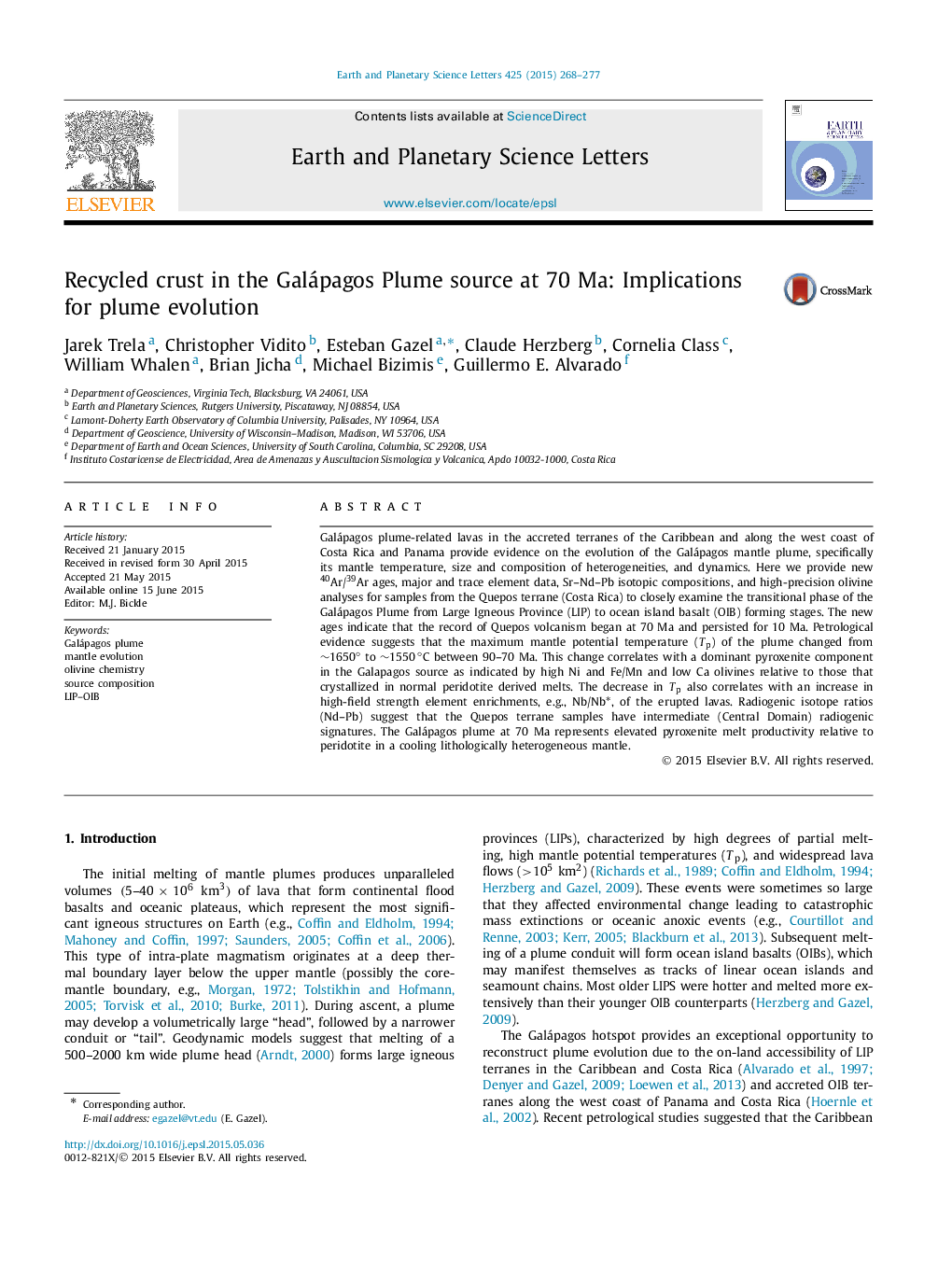| کد مقاله | کد نشریه | سال انتشار | مقاله انگلیسی | نسخه تمام متن |
|---|---|---|---|---|
| 6428297 | 1634731 | 2015 | 10 صفحه PDF | دانلود رایگان |

• The Quepos terrane, Costa Rica records the LIP–OIB transition in the Galapagos plume.
• The mantle potential temperature of the plume changed from ∼1650 to ∼1550 °C between 90–70 Ma.
• A dominant pyroxenite component is observed for the first time at ∼70 Ma in the Quepos terrane.
• The presence of a dense pyroxenite component may explain the observed TpTp decrease.
• Nb/Nb⁎ enrichments and radiogenic Pb ratios support the presence of a recycled pyroxenite source.
Galápagos plume-related lavas in the accreted terranes of the Caribbean and along the west coast of Costa Rica and Panama provide evidence on the evolution of the Galápagos mantle plume, specifically its mantle temperature, size and composition of heterogeneities, and dynamics. Here we provide new 40Ar/39Ar ages, major and trace element data, Sr–Nd–Pb isotopic compositions, and high-precision olivine analyses for samples from the Quepos terrane (Costa Rica) to closely examine the transitional phase of the Galápagos Plume from Large Igneous Province (LIP) to ocean island basalt (OIB) forming stages. The new ages indicate that the record of Quepos volcanism began at 70 Ma and persisted for 10 Ma. Petrological evidence suggests that the maximum mantle potential temperature (TpTp) of the plume changed from ∼1650° to ∼1550 °C between 90–70 Ma. This change correlates with a dominant pyroxenite component in the Galapagos source as indicated by high Ni and Fe/Mn and low Ca olivines relative to those that crystallized in normal peridotite derived melts. The decrease in TpTp also correlates with an increase in high-field strength element enrichments, e.g., Nb/Nb⁎, of the erupted lavas. Radiogenic isotope ratios (Nd–Pb) suggest that the Quepos terrane samples have intermediate (Central Domain) radiogenic signatures. The Galápagos plume at 70 Ma represents elevated pyroxenite melt productivity relative to peridotite in a cooling lithologically heterogeneous mantle.
Journal: Earth and Planetary Science Letters - Volume 425, 1 September 2015, Pages 268–277